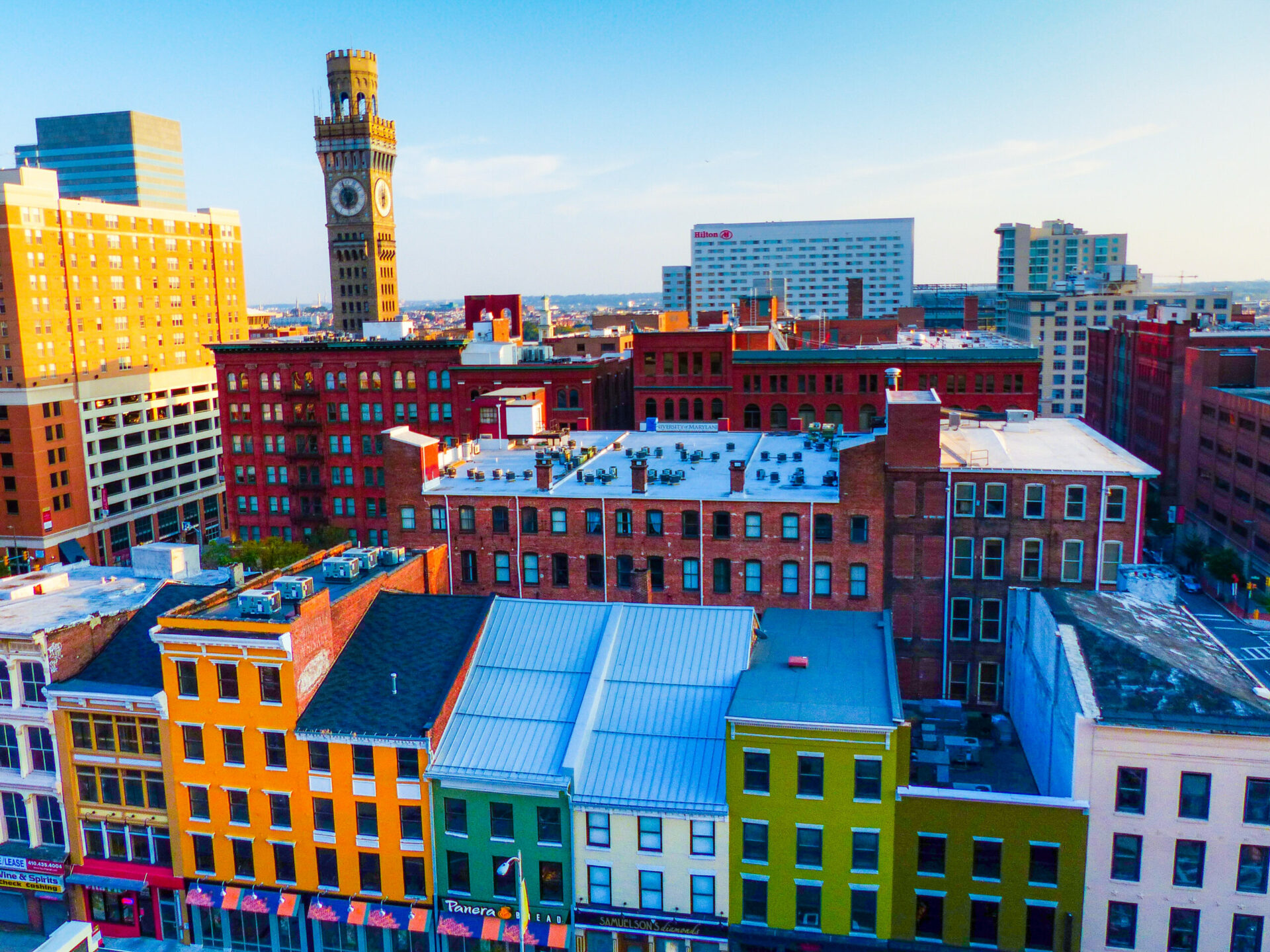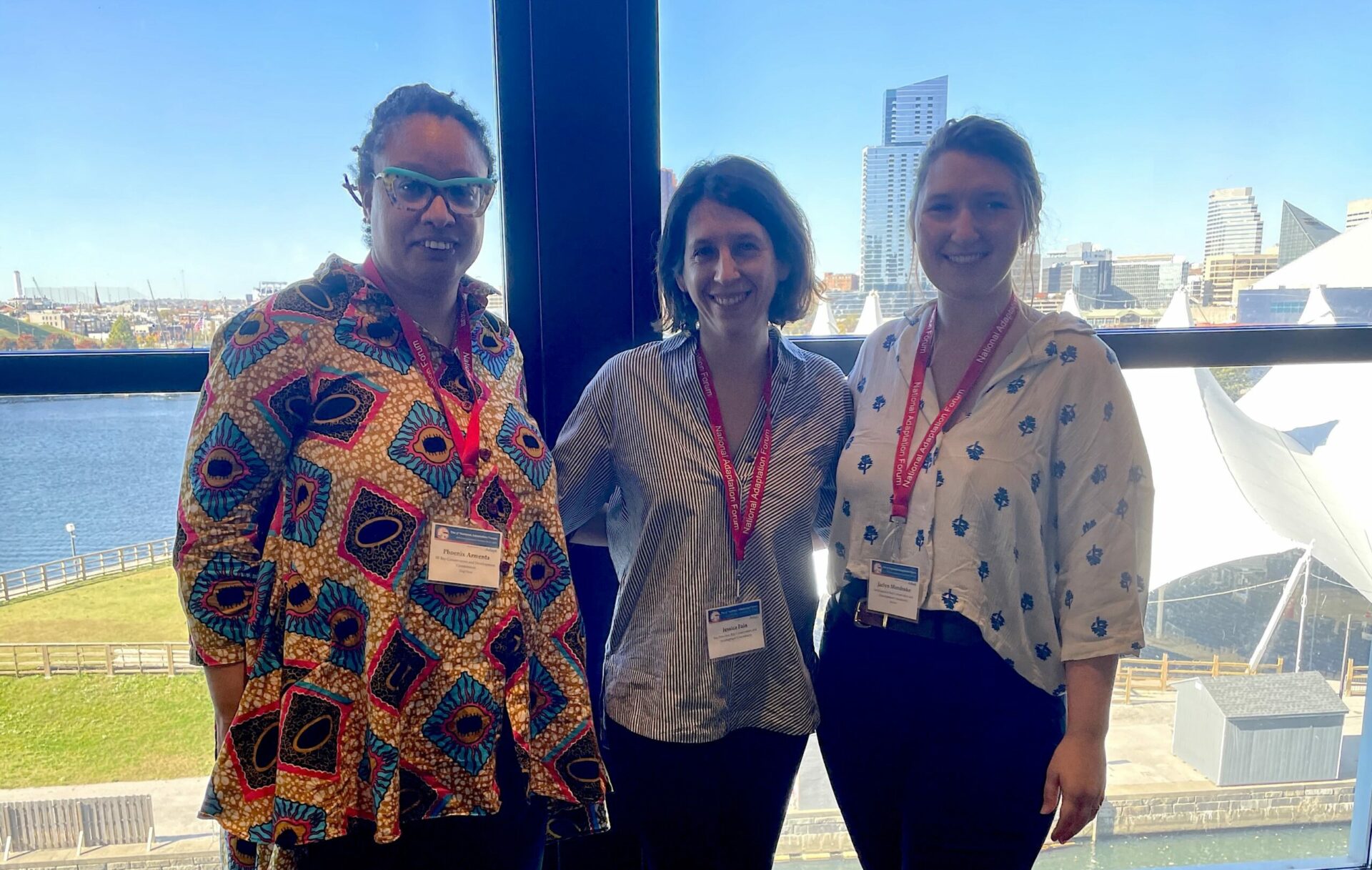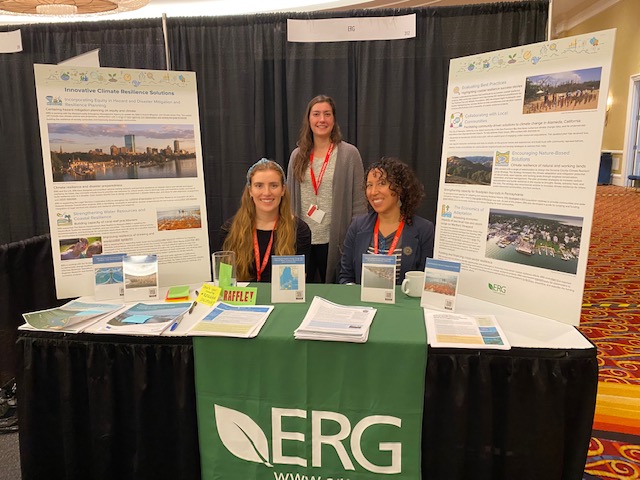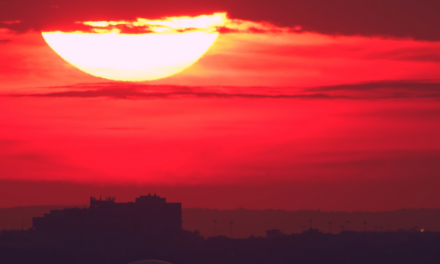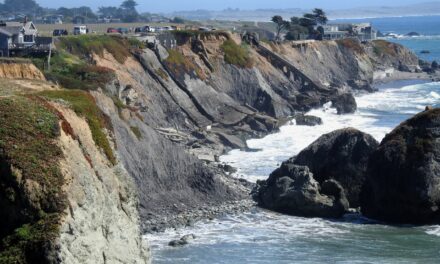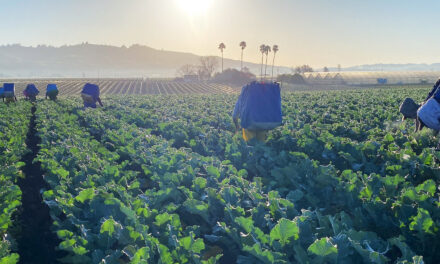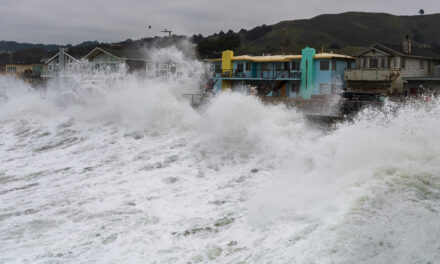Q&A: National Conference, Local Take-Homes
Among the 800-plus climate change planners and activists attending the National Adaptation Forum in Baltimore, Maryland this October were a dozen local leaders from the San Francisco Bay Area. The Forum aimed to “gather the adaptation community to foster knowledge exchange, innovation, and mutual support for a better tomorrow,” according to conference organizers. KneeDeep Times asked attendees from the Bay Area to answer some key questions about where the region stands in relation to the rest of the nation on the climate resilience front, and what stood out to them in terms of presentations, speakers, and take homes from the event.
Those interviewed by email include: Josh Bradt and Allison Brooks from the Bay Area Regional Collaborative; Jaclyn Mandoske and Phoenix Armenta, climate and equity staffers from the SF Bay Conservation and Development Commission; Lindy Lowe, a consultant from ERG’s Blue Earth Team; Heidi Nutters, a shoreline adaptation manager from the SF Estuary Partnership; and Tira Okamoto, a graduate student researching climate equity at Simon Fraser University in Vancouver who previously worked in Bay Area sea-level rise adaptation.
The Bay Area Regional Collaborative (which includes the SF Bay Conservation and Development Commission) is a funder of KneeDeep Times.
Did the event make you feel hopeful or depressed?
BRADT: Hopeful because the event was sold out, had a wide breadth of speakers and topics, and put an emphasis on the human-side of climate change impacts, with particular focus on equity and environmental injustice.
ARMENTA: Hopeful because equity seemed to be a central theme throughout the conference and there was a concerted effort to uplift Indigenous voices. The speech by Secretary [Deb] Haaland was electrifying. But I was left wanting more. If we were bringing 800 adaptation professionals across the country to conference together, we should have had a project to complete once we got there. I wanted to see more action, more collaboration, and more direct problem solving.
LOWE: There was a lot of optimism and kindness at NAF. People seemed energized and excited. Putting people first was a theme. The discussions of ten years ago that were centered around physical assets and forgot about people seem behind us, at least at NAF.
MANDOSKE: At first it felt quite overwhelming — the scale of the problem is enormous, and the solutions will require fundamental shifts in the way people work together. Yet as I participated in more and more sessions, I found a resounding call for equity — for underserved, low-income, indigenous, people of color, and environmental justice communities to be front and center in all of this work. I was relieved to see the community of adaptation professionals recognize that this is more than just a technical and engineering challenge (which it is!), but part of a social justice movement. I hope to see the National Adaptation Forum explore more inventive ways to benefit from being in shared spaces. Let’s experiment, push boundaries, fail, learn, and ultimately grow.
OKAMOTO: Good to see the focus on equitable climate adaptation. Yet, not enough energy or urgency on centering climate justice. Still feels like a lot of talk and less mobilization from a group of people with power and privilege.
BCDC’s Phoenix Armenta, Jessica Fain and Jaclyn Mandowske in Baltimore.
What session or speaker or message inspired you most?
NUTTERS: A panel that really impacted me was Stop Asking Us to be Resilient: Community Perspectives on the Resilience Myth. One of the panelists, Ashley Shelton, wrote an article for Essence Magazine about Hurricane Ida. It was an important message about the historical trauma frontline communities in hazard zones face and that being told they are “so resilient” in the face of government failure to respond just adds to that trauma. Sometimes we forget just how much our words matter. This session was a powerful reminder and renewed my excitement about supporting more community-led adaptation work here in the SF Bay.
BRADT: Ashley Shelton talked about about the broken and failing disaster response programs where funds DO NOT reach their intended users. Even after Hurricanes Ida and Katrina, black folks are still trying to get services and their homes rebuilt (while living in temporary housing AND paying mortgages for unlivable homes). She gave a statistic that when factoring the federal aid and how it has been allocated, then actually distributed, on the whole white families gained wealth while black families lost wealth. Government trying to even get money back! These stories are crucially important to share.
MANDOSKE: I found the session Stop Asking Us to Be Resilient to be a humbling and valuable perspective. My take-away was that using words like “resilient” and throwing them around as though they are a compliment — when in fact communities are struggling in the aftermath of these events — diminishes their meaning. To be perpetually resilient, as one of the panelists said, is exhausting and simply another form of oppression. I found this incredibly impactful, and to me this means looking critically at the words we use in adaptation planning — resilience, equity, environmental justice — and ensuring we connect them to tangible actions with measurable change.
ARMENTA: In the Q&A of the session Diverse Communication Approaches to Reach Diverse Audiences, indigenous organizer James Rattling Leaf asked the presenters what it would take to get a national communications project going that told the story of the Indigenous movement in their own voices and changed the narrative of the environmental movement. For me that felt like what a conference like this should be about. We need to take ideas like Leaf’s and start using the time we have together at these conferences to see if we can make them a reality.
Other Recent Posts
Assistant Editor Job Announcement
Part time freelance job opening with Bay Area climate resilience magazine.
Training 18 New Community Leaders in a Resilience Hot Spot
A June 7 event minted 18 new community leaders now better-equipped to care for Suisun City and Fairfield through pollution, heat, smoke, and high water.
Mayor Pushes Suisun City To Do Better
Mayor Alma Hernandez has devoted herself to preparing her community for a warming world.
The Path to a Just Transition for Benicia’s Refinery Workers
As Valero prepares to shutter its Benicia oil refinery, 400 jobs hang in the balance. Can California ensure a just transition for fossil fuel workers?
Ecologist Finds Art in Restoring Levees
In Sacramento, an artist-ecologist brings California’s native species to life – through art, and through fish-friendly levee restoration.
New Metrics on Hybrid Gray-Green Levees
UC Santa Cruz research project investigates how horizontal “living levees” can cut flood risk.
Community Editor Job Announcement
Part time freelance job opening with Bay Area climate resilience magazine.
Being Bike-Friendly is Gateway to Climate Advocacy
Four Bay Area cyclists push for better city infrastructure.
Can Colgan Creek Do It All? Santa Rosa Reimagines Flood Control
A restoration project blends old-school flood control with modern green infrastructure. Is this how California can manage runoff from future megastorms?
San Francisco Youth Explore Flood Risk on Home Turf
At the Shoreline Leadership Academy, high school students learn about sea level rise through hands-on tours and community projects.
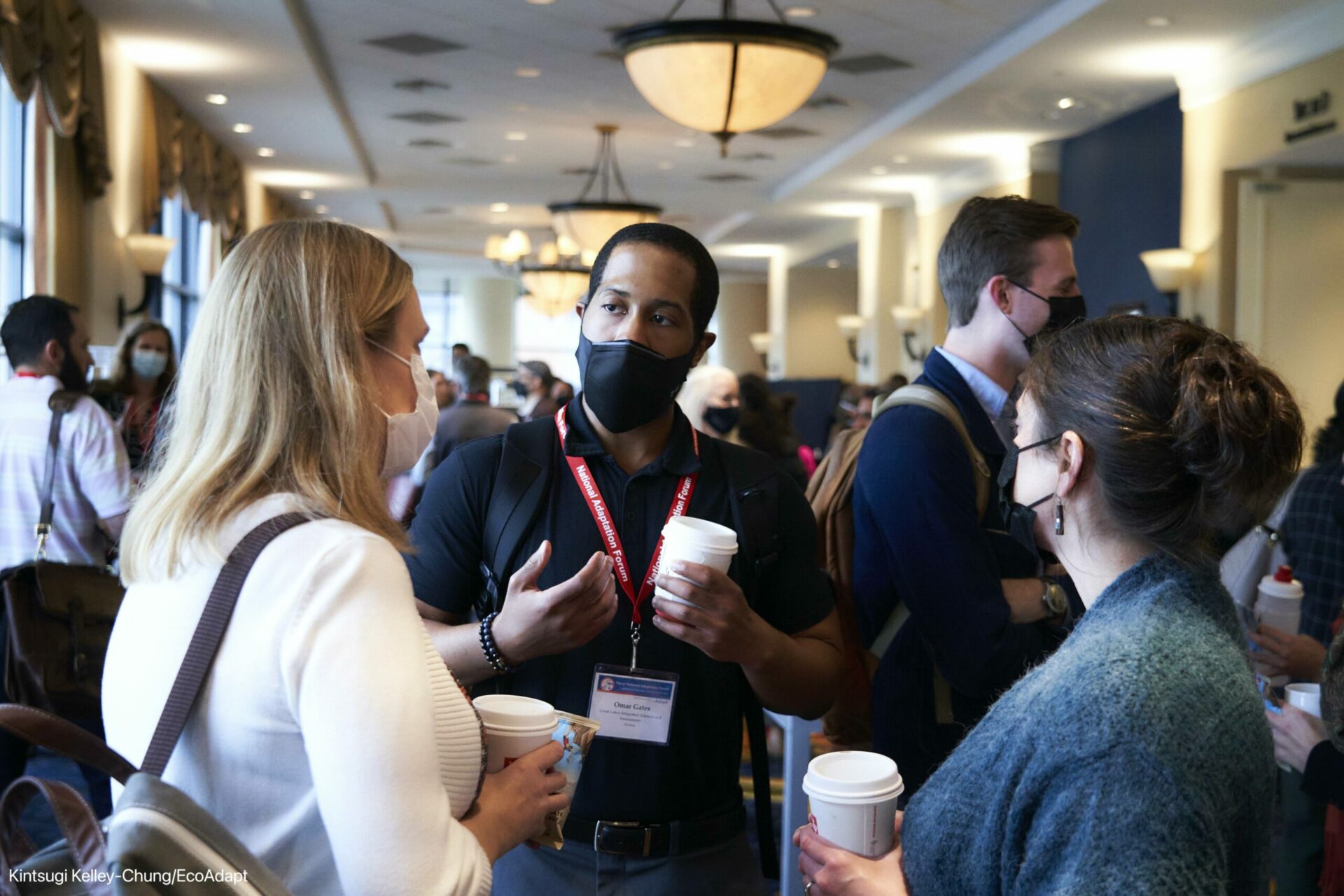
Hallway conversations at the national forum. Photo: NAF.
How does the Bay Area compare to the rest of the country?
BRADT: It feels like the Bay Area is ahead in many areas in terms of state, regional, and local planning hazard mitigation and adaptation efforts, guidance, and funding specifically for this purpose. It is still politically and socially problematic to use the term climate change in Florida and other southern states. Many Bay Area agencies are embedding equity into their programs and making the conscious effort to be better collaborators with EJ communities.
MANDOSKE: Our context and experience with flooding is different. While the Bay Area experiences flooding today from king tides and significant rain events, folks in communities on the East Coast, such as in Maryland and Florida, are seeing “sunny day” tidal flooding regularly. Hurricanes and major storms have also shown people what multiple feet of flooding looks like. Out on the West Coast, where we don’t see those types of weather events (like hurricanes), we are trying to be prepared for hazards that many people haven’t seen yet. In some ways, I think that makes our work harder. In other ways, we are incredibly fortunate that we have this critical time now to plan for the future of flooding we know is coming.
OKAMOTO: The Bay is well ahead on climate adaptation and talking about equitable adaptation. Good to see other examples from around the country as well as national efforts to further standardize and normalize adaptation across the country.
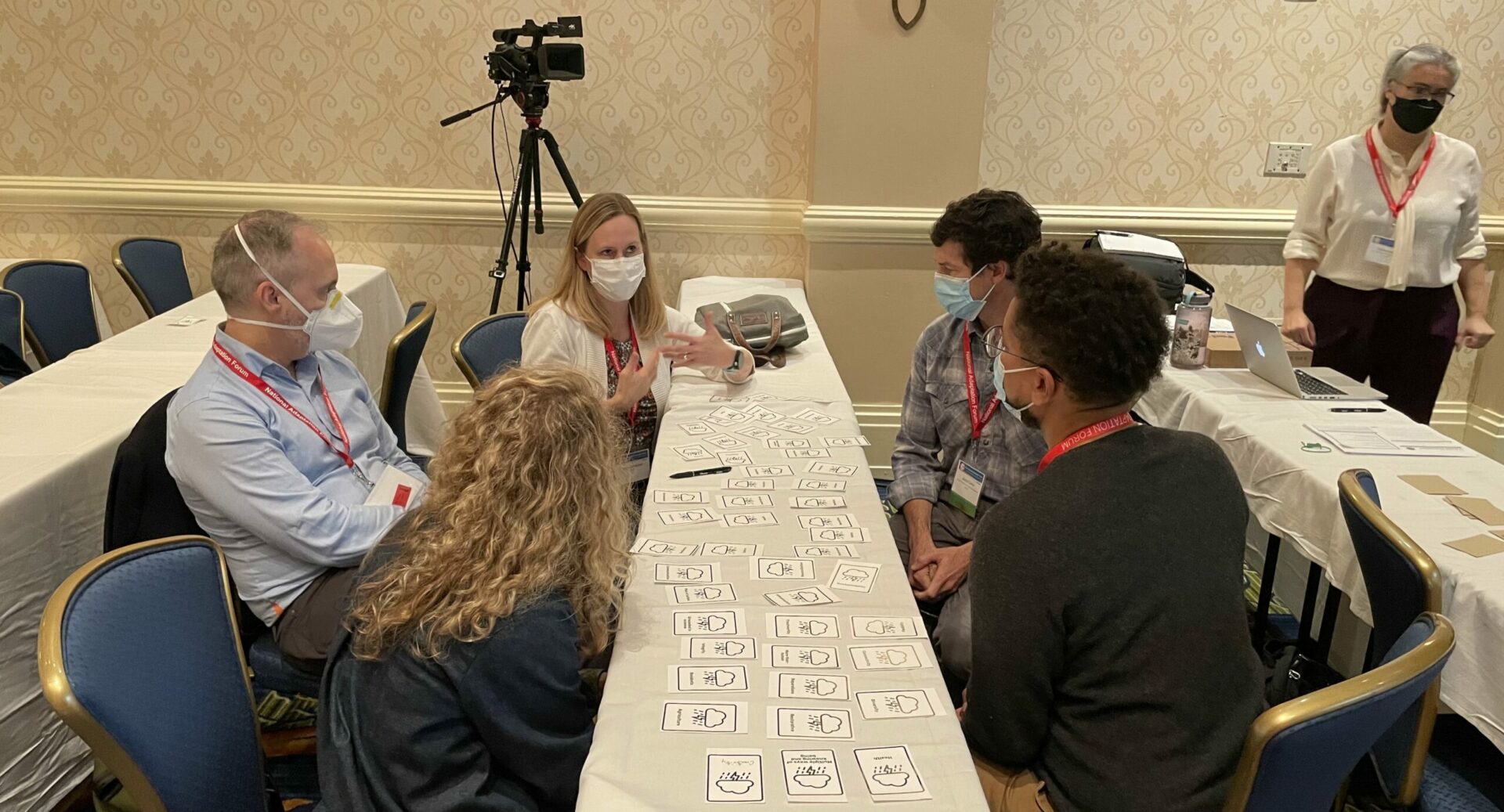
As part of the “Getting to the Root of adaptation: The Values that Guide our Work” session co-facilitated by Tira Okamoto and Vanessa Lueck, workshop participants participated in a small group activity around values-based adaptation. Photo: Tira Okamoto.
What was your take home lesson for your workplace or agency?
BRADT: There are no niches in climate change adaptation. It is all encompassing and will touch every aspect of our society over time. While we continue to work in silos, we are losing time, efficiency, and opportunities to share and learn from each other about how climate change impacts us (individually, at community level, and society at large).
OKAMOTO: Based on the attendance at NAF, mainstream adaptation professionals — largely white and female — hold huge power and privilege and have not yet collectively reflected on that positionality and how they can work in authentic and transparent solidarity with communities to support a climate just future.
ARMENTA: I was lucky to be on a panel of people talking about sea-level rise adaptation in a variety of locations in the Bay Area. It’s ironic that I had to travel so far away to get such a holistic view of what was happening in my own region, but my participation in that panel deepened my understanding. I made new connections and hope to follow up on those while working on guidelines for sea level rise planning for local jurisdictions as part of the Bay Adapt process.
LOWE: Nature based approaches to climate mitigation and adaptation continue to be very supported and are becoming more mature in terms of indicators, metrics, monitoring and evaluation. The adaptation field has developed best practices in design, monitoring and evaluation to measure progress, and best practices regarding engagement.
What signs of diversity or inclusion did you note at the conference?
BRADT: Most speakers and attendees seemed to be white women. The non-white speakers were powerful in their presence and had excellent presentations. It looks like about half the sessions had presenters who self-identified with “Climate Justice & Equity” perspective.
ARMENTA: I’ve often been at these conferences feeling uncomfortable that I was one of the few brown people in the room. I’m happy to say that this was not the case this time. If I were to say what could be improved I would say more youth, more folks with disabilities.
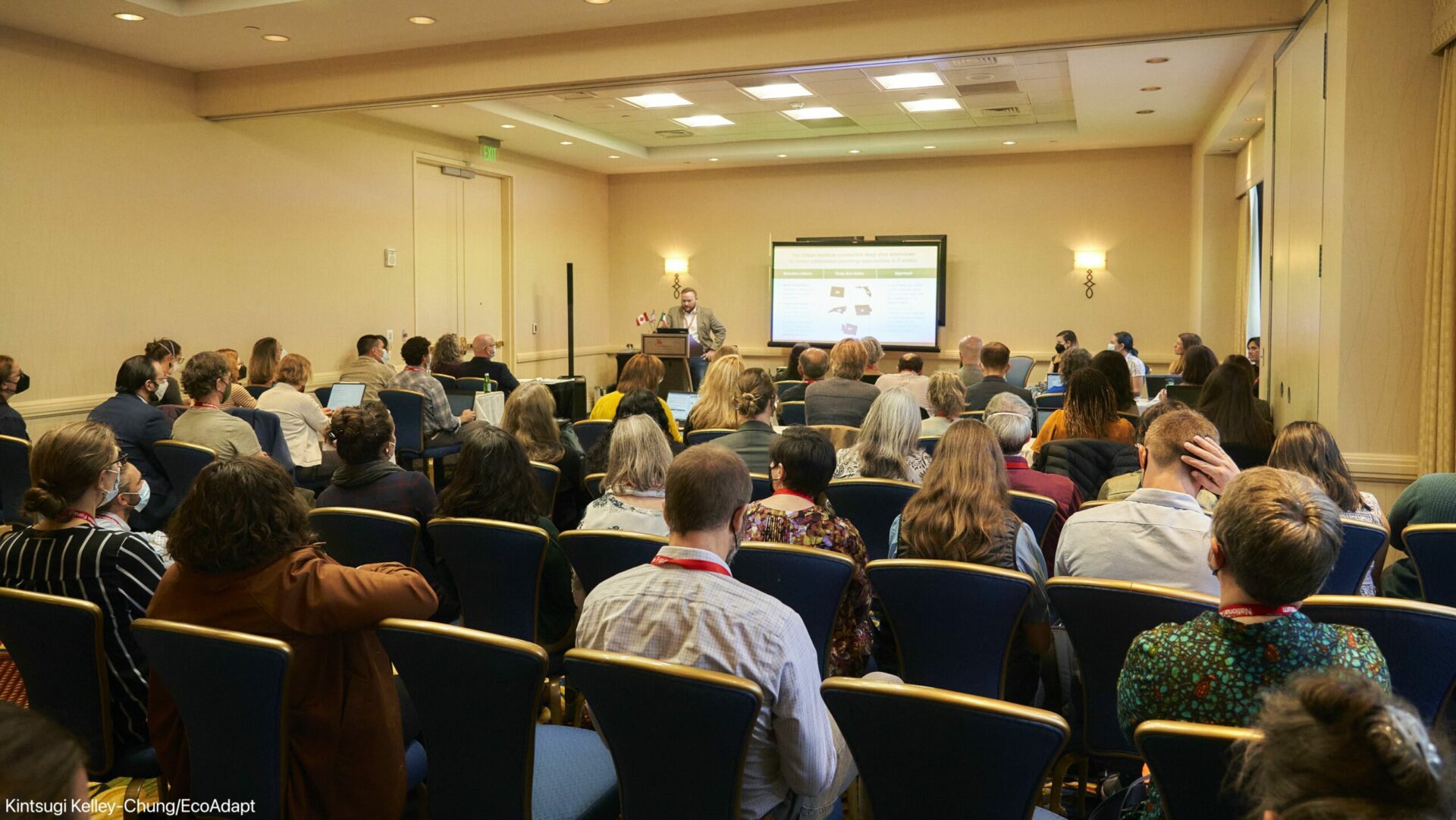
What surprised or struck you?
BROOKS: The National Adaptation Forum — to become a center to advance a field of practice on climate adaptation and resilience — could benefit from representation from more sectors outside of the explicitly environmental realm. I’m thinking of transportation, housing, land use and community development, real estate finance and insurance, in addition to sustainability, conservation, and environmental science. Climate adaptation is still so embedded in the environmental sector (which trends older and white) and we are missing integrating it with other sectors that frankly aren’t talking about it at all, but absolutely should be.
ARMENTA: In a session on Climate Equity Indicators I learned that Cincinnati had done a study and found that their low-income black and brown communities were the most environmentally burdened and the most at risk to climate change. It seems like all across the United States we are finding the same data that definitively proves what environmental justice advocates have been saying for years: that black and brown communities have been bearing the brunt of environmental injustice. What surprises me is that this has not led us to conversations about climate reparations for these communities. It is my hope that those of us who have been collecting this data can use it to get these communities the resources that they need to remediate environmental burdens and build safe, healthy, and climate resilient communities.
BRADT: I was really struck by the session: Moving from Facts and Fears to Storytelling: Changing the Climate Narrative with speakers Katherine Hayhoe (Texas Tech, The Nature Conservancy) and Susanne Moser (consultant). Both emphasized the importance of just having conversations centered on climate change between individuals as the place to start, rather than listing the terrible array of hazards and only speaking to true-believers. One of them had a series of slides showing climate awareness by county across the country. In almost all counties, people responded to polls that they believed in climate change, but significantly fewer believe it will impact them personally, and fewer still actually talk about it with their peers. This is a fascinating insight into human psychology.
What was the most forward-thinking initiative you heard about?
Photo: Kintsugi Kelley-Chung/Eco-Adapt.
Booth at the conference. Photo courtesy ERG.
OKAMOTO: Dibaginjigaadeg Anishinaabe Ezhitwaad: Lessons from the Tribal Climate Adaptation Menu. I would have liked to see more Indigenous speakers overall sharing how climate is impacting them.
BRADT: The session Uncharted Waters: Using Uncommon Approaches to Adaptation had four presenters talking about very cool ways of reimagining how the future can look. The first speaker presented on stormwater financing with private sector credits in DC; another spoke about developing long term relationships between communities relying on the same watershed processes to ensure both drinking water and environmental support water is available in Montana’s Rocky Mountains; another speaker described systemic vulnerability mapping and analyses in Los Angeles County, and showed which sectors have the most cascading impacts if services are interrupted (in addition to electricity, the other most important resource to protect against cascading impacts is service workers); the last speaker showed great examples of amphibious housing that can float in-place during flood events — this approach has been used throughout the world including Southeast Asia, the Netherlands, and Louisiana. Overall in this session, I was struck by the themes of private/public sector relationships, long-term trust building, as well as dependence on human resources and technical know-how to keep social systems functioning.






